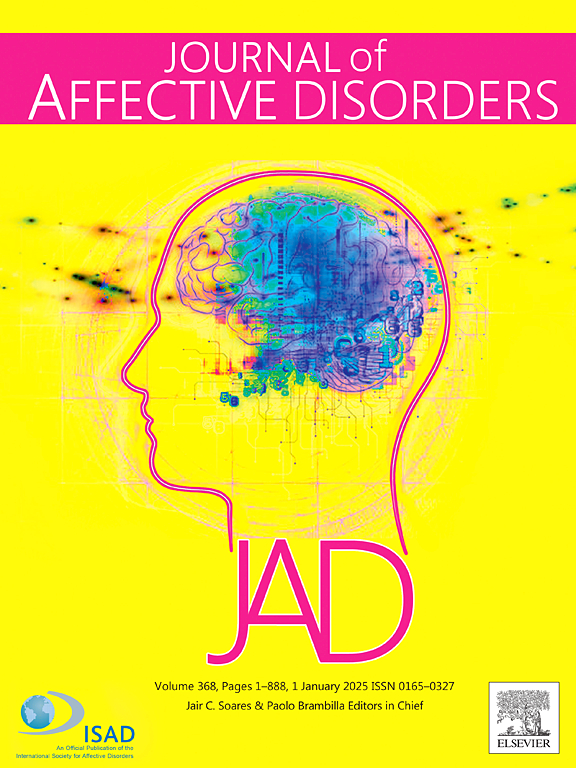Construction and verification of risk prediction model for suicidal attempts of mood disorder based on machine learning
IF 4.9
2区 医学
Q1 CLINICAL NEUROLOGY
引用次数: 0
Abstract
Background
Mood disorders (MD) are closely related to suicide attempt (SA). Developing an effective prediction model for SA in MD patients could play a crucial role in the early identification of high-risk groups.
Methods
1099 patients with MD were collected to Model construction. 387 MD patients were enrolled for external validate. The least absolute shrinkage and selection operator (LASSO) regression was used to screen features that may be related to SA as predictors. Ten machine learning algorithms were applied to the training set to construct the SA prediction model. The machine learning model with the best sensitivity and stability was selected according to AUC, F1 score, accuracy and other indicators. The locally explanatory technique of Shapley Additive Explanations (SHAP) was used to rank and interpret the importance of features collected in best model to analyze the potential impact of each feature on SA. Meanwhile, to further validate the stability of the model, the sensitivity analysis utilizing k-fold cross-validation and external validate in another center were performed.
Results
This study incorporates 8 features. Prediction models was constructed based on 10 different machine learning methods. The results showed that the prediction model constructed by Random Forest (RF) method had good discriminant ability and stability (AUC of Testing = 0.741, AUC of Training = 0.786, AUC of validation = 0.788) and acceptable discriminant. Further, the prediction model showed that the most valuable features for predicting SA were Polarity and previous SA.
Conclusion
The RF method can better construct the risk prediction model of SA in MD patients.
求助全文
约1分钟内获得全文
求助全文
来源期刊

Journal of affective disorders
医学-精神病学
CiteScore
10.90
自引率
6.10%
发文量
1319
审稿时长
9.3 weeks
期刊介绍:
The Journal of Affective Disorders publishes papers concerned with affective disorders in the widest sense: depression, mania, mood spectrum, emotions and personality, anxiety and stress. It is interdisciplinary and aims to bring together different approaches for a diverse readership. Top quality papers will be accepted dealing with any aspect of affective disorders, including neuroimaging, cognitive neurosciences, genetics, molecular biology, experimental and clinical neurosciences, pharmacology, neuroimmunoendocrinology, intervention and treatment trials.
 求助内容:
求助内容: 应助结果提醒方式:
应助结果提醒方式:


